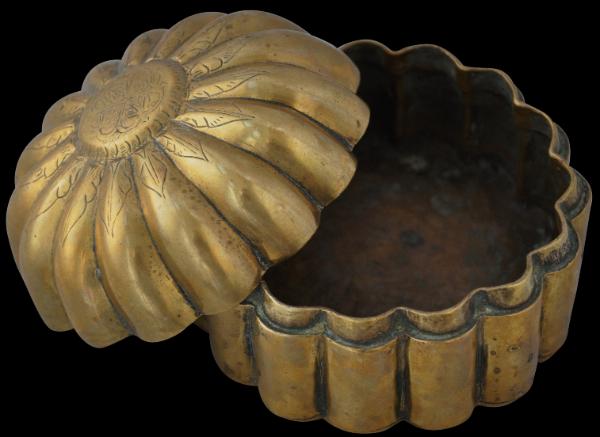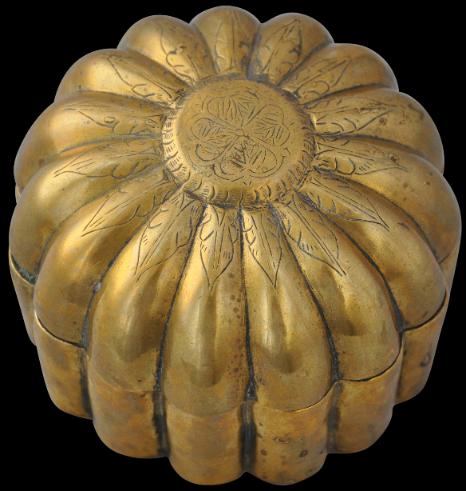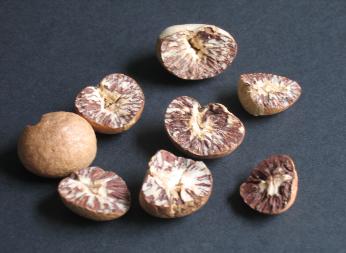Mughal Brass Pandan
Engraved Mughal Brass Betel Box (Pandan)
Northern India
17th-18th century
diameter: 9.5cm, height: 6.7cm
This betel or paan box or pandan is of circular form with a convex lid and with deeply ribbed sides giving it a Mughal architectural quality. The top of the lid has been engraved with a star-burst open-petalled flower. The construction is solid and the lid fits well.
Betel chewing is a habit that unites Southeast Asia with the Indian sub-continent, parts of southern China and the Western Pacific. Whereas alcohol was associated with feasting, betel was the everyday social lubricant: it was offered to visitors to one’s home. And just as the English developed elaborate tea sets, Indians and Southeast Asians developed elaborate betel nut sets.
The actual nut comes from the areca palm tree. Typically, it is sliced, mixed with lime (usually obtained from crushed seashells) and then wrapped up in a betel creeper leaf and chewed. The lime reacts with compounds in the nut to produce alkaloids which give a mild narcotic effect.
The form of this pandan is seen occasionally in Mughal miniature paintings, often resting at the feet of courtiers who are seated on carpets amid cushions whilst partaking of betel.
References
Zebrowski, M., Gold, Silver & Bronze from Mughal India, Alexandria Press, 1997.
Provenance
Acquired from the UK antiques market and most probably has been in the UK since the colonial period.
Inventory no.: 1129
SOLD
Detail: Crucifix stamped to the side of the bowl.



Dried betel or paan kernels that have been cracked open. Each is about 1.5cm across
.

